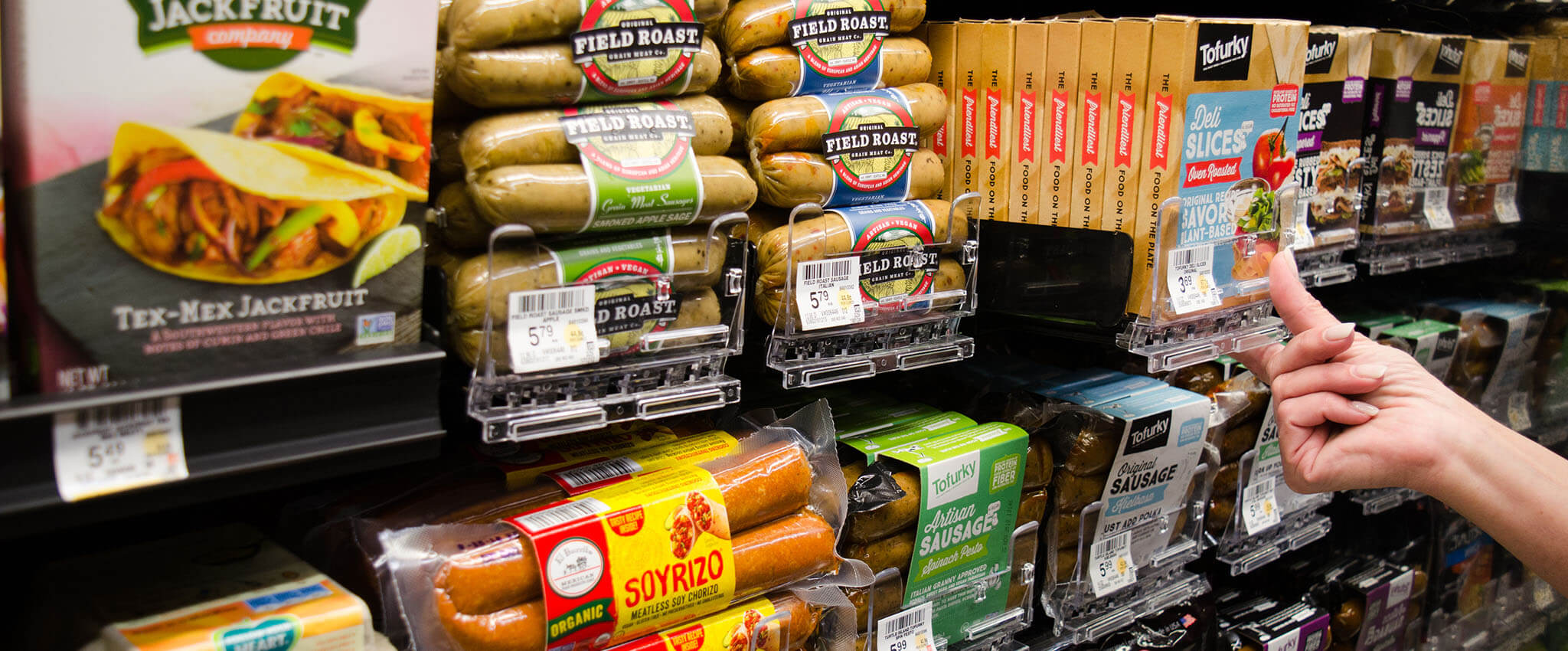It’s almost magical. A product is removed from the shelf and just like that, the next package in line moves to the front!
While technically there’s no magic involved, pusher display systems could be the wish come true for both shoppers and retailers.
Millions of shoppers across the U.S. each day rely on pusher display systems to help make their shopping trips faster, product selection easier and their overall experience better.
For retailers, a good portion of their personnel and financial challenges involve the labor-intensive front-facing, conditioning and restocking of shelves. Pusher display systems are designed to reduce the time and staff required to manage inventory on the shelves.
Faster & easier is what they do, but how do pusher display systems work?
While each manufacturer has its own design for their systems, each feature the same 3 key components: a pusher paddle, a spring and a lens.
For the systems to work, a coiled spring typically made from steel tape is attached to a vertical paddle, which acts as the product pusher. The spring – seated in a channel below packages in the product tray – maintains pressure between the pusher paddle and the lens in front.
The spring mechanism works similarly to a steel tape measure. Imagine hooking the end of a tape measure to the edge of a table and then extending the tape several inches before locking it. Place a line of packages on top of the steel ribbon before releasing the tape measure. As the tension of the steel tape pulls the body of the tape measure forward, it also pushes the packages forward.
At this point, you should also be able to imagine that without something stopping those packages at the end of the table, they would fly out when reaching the edge. That’s the role of the lens, which holds the line of packages in place. Clear plastic material is often used to provide product visibility.
Retail Space Solutions engineers have developed proprietary spring/pusher technology that controls the speed of the pusher, advancing products slowly with just the right amount of pressure in its SpaceGrid®II, SpaceDriver®II and SimpliStock™ pusher display systems.
What that means is that the spring technology in Retail Space Solutions systems provides the ideal tension to securely hold packages in place and at the same time release easily to allow for product replacement on the shelf.
Here’s why that’s important: while they might look similar, not all pusher display systems are created equally.
As consumers, we’ve all experienced the imperfections of inferior pusher systems. Some have too much tension, which push products forward with so much force that containers can be damaged or the next packages in line fly off.
Returning products to the shelf with those systems and their stubborn mechanisms can also be a chore, and oftentimes unwanted stock is simply placed on top of the others on the shelf.
Then there are the other systems that provide too little tension and packages get hung up or don’t slide forward at all. With those systems, it can almost be like there’s no system in place at all.
Any perceived cost savings to the retailer installing those systems is soon consumed by damaged packages, lost sales to frustrated customers or more effort required in stocking. And in the end, the inferior systems deliver more problems than they do value.
Retail Space Solutions offers a complete line of pusher systems, each offering advanced pusher technology and durable construction designed for long-term performance in everything from frozen and refrigerated cases to center of the store displays.
To see more about these systems – including videos that show them in action – visit retailspacesolutions.com. You can also learn more by calling 800-279-5291.
